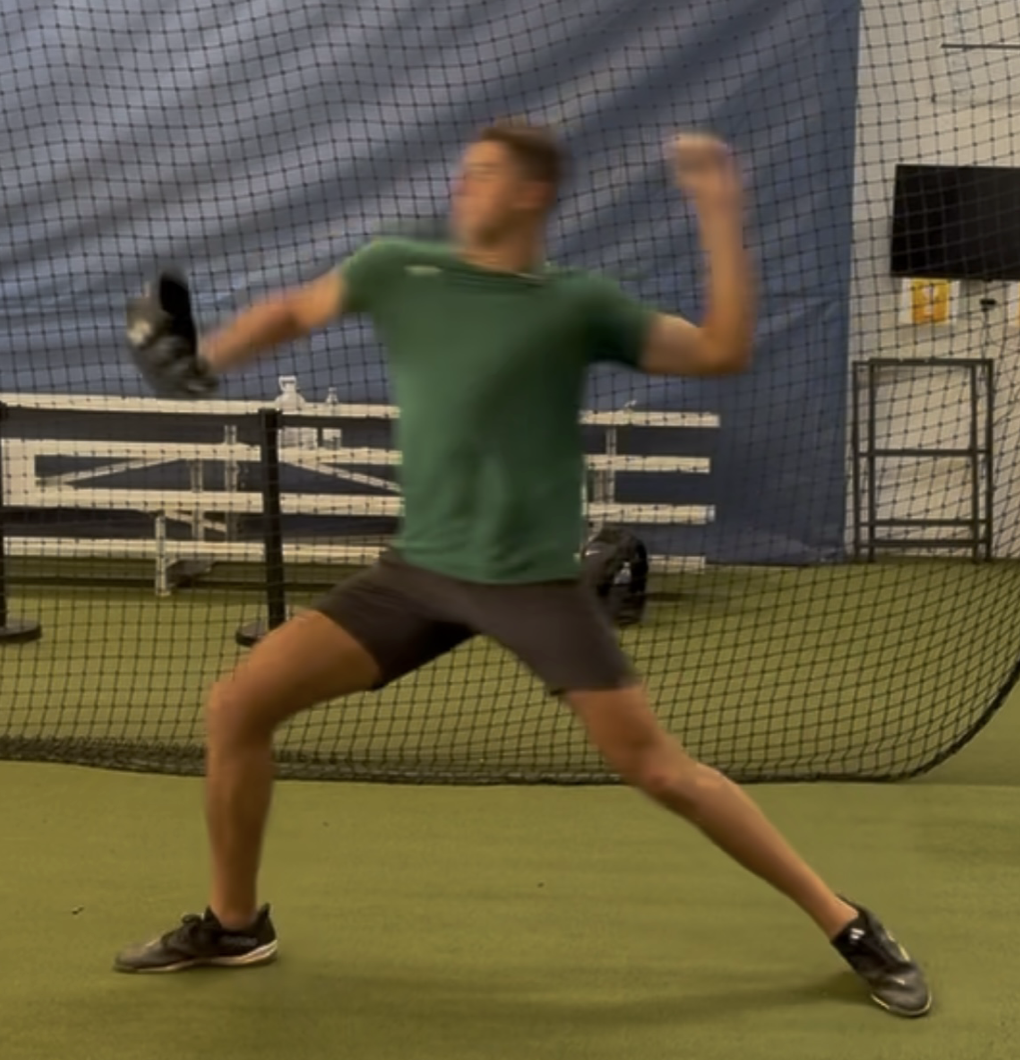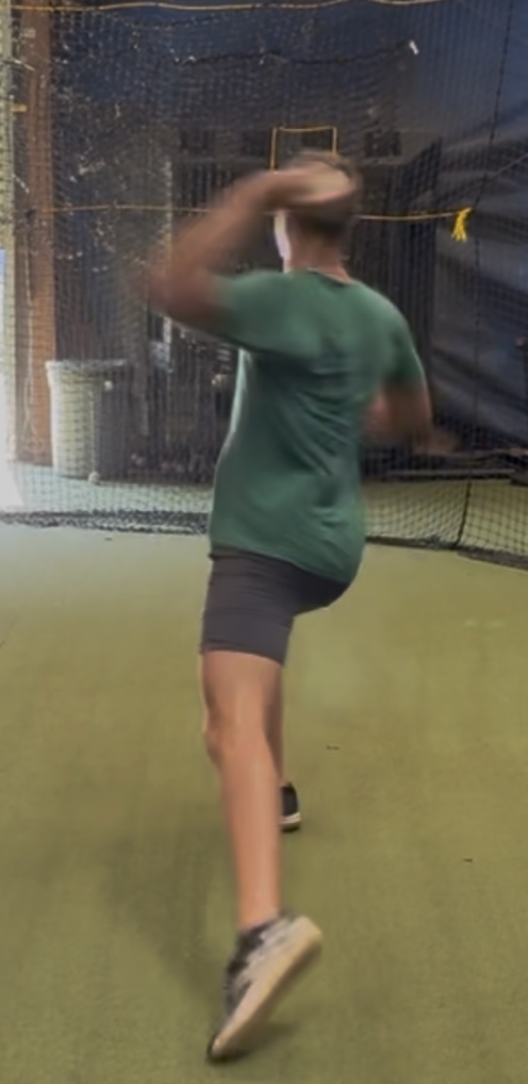
 When I look at pitching mechanics, I don’t see them as rigid rules or a single “perfect delivery.” Instead, I see them like a roadmap. But no matter what route a pitcher takes, the destination I’m guiding them toward is always the same: a delivery that minimizes stress on the elbow and shoulder while maximizing efficiency and power.
When I look at pitching mechanics, I don’t see them as rigid rules or a single “perfect delivery.” Instead, I see them like a roadmap. But no matter what route a pitcher takes, the destination I’m guiding them toward is always the same: a delivery that minimizes stress on the elbow and shoulder while maximizing efficiency and power.
One of the key checkpoints I’m always watching for is what happens when the arm gets into that critical 90/90 position—elbow bent at 90 degrees, arm abducted 90 degrees from the torso, with the hand stacked directly above the elbow when the front side foot hit the ground (see 90/90 position photo). This position is a biomechanical sweet spot. It doesn’t guarantee perfect mechanics, but when pitchers hit this point consistently, it reduces time under tension on the elbow and sets them up for healthier, more explosive throws.
I’m not here to sell one pitching style over another. Every coach has their preferences. But what I’ve learned from years of studying mechanics and working with athletes is that styles vary—checkpoints don’t. No matter how a pitcher moves, I look for specific markers during the delivery that tell me whether they’re efficient, powerful, and safe.
Let’s walk through those checkpoints together—phase by phase.
The cocking phase is where force generation begins, and it starts with the lower half. I always check that the pitcher’s hip stays stacked over the back foot and the rubber. When a pitcher drifts forward too soon, they lose the optimal ability to load their backside, and that robs them of both power and timing.
A cue I often give players is simple but effective:
“Imagine there’s a bug under the ball of your big toe. Crush it—but keep pressure along the inside of your foot, all the way from your big toe to your heel.”
This medial foot pressure engages the hip properly and builds a stronger load.
From here, timing becomes the next critical checkpoint. Ideally, the hands separate as the lead knee starts moving downward. When the hands separate late, it often leads to drifting—and when a pitcher drifts, they often separate late. These faults are connected and feed into each other.
Another thing I watch closely: the path of the throwing hand. If it sweeps too far behind the body—toward first base for a righty, third base for a lefty—it creates timing problems and lengthens the arm path. (see attached photo 1) When this happens, most often the player gets their hand behind their head and into the “stuck” position which places more strain upon the inside (medial) aspect of the elbow. (photo 2)



Instead, I want the hand to stay on a direct line just either side of second base. This reduces the steep angle acuity of the elbow and does not get “stuck” behind the head (photo 3) Once the torso and hips start to rotate, it’s natural for the arm to lag slightly behind. But in the early cocking phase, staying on line is essential.
The transition from cocking into acceleration is where everything either clicks—or falls apart.
When I evaluate pitchers, I look for that 90/90 position we talked about earlier: hand above elbow, elbow bent at 90, arm abducted 90 from the torso. This is the checkpoint that allows the pitcher to throw with force while limiting stress.
But I don’t just look at the arm. The lower half tells me just as much about how a pitcher is moving. I want to see the back foot fully evert (heel and bottom of foot rotated outward) and the heel stay grounded as the hips begin to rotate. If the heel lifts too early, it often points to tightness in the adductors—the inner thigh muscles—or foot structure which limits hip mobility and force transfer.
I also check the back knee extension. A backside knee that stays bent into acceleration is a red flag. A knee that extends with the heel down shows me the pitcher has good mobility in the adductors and hips and is generating force efficiently from the backside.
On the front side, I’m always watching the landing. Pitchers who land on their heel are usually over-striding, which makes a challenging to get the chest over the lead leg and prevents proper force absorption. Landing on the mid-foot is ideal—it allows the ankle, knee, and hip to flex and absorb force before redirecting it into a strong lead-leg block.
Finally, at release and into follow-through, I look for the pitcher’s chest to ride over the front leg and finish toward the glove side but still facing the target. This helps ensure full trunk rotation and proper deceleration of the arm.
Every pitcher’s delivery is unique. As coaches, we don’t need to chase one “perfect” style. What we do need is an eye for the universal checkpoints that show us whether a pitcher is moving efficiently and safely.
When you start thinking of pitching as a roadmap, you stop worrying about whether a player’s delivery looks textbook. Instead, you start focusing on whether they’re hitting the landmarks that matter:
Coaches who teach with these checkpoints in mind aren’t just building better pitchers—they’re building healthier ones. And that’s the real win.
